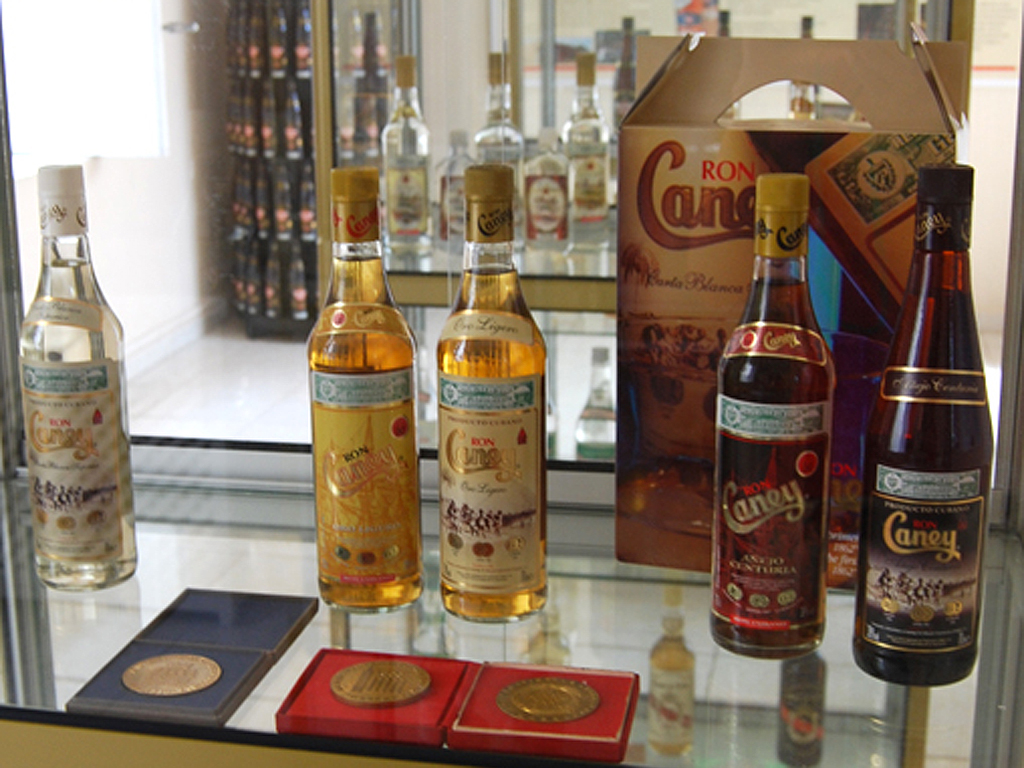Cuban Rum
Rum is considered Cuba’s national alcoholic drink. Beer and wine are very expensive in Cuba (by Cuban standards) but you can get rum for just a few cents. Each Cuban is also entitled to a liter of rum each month at a subsidized price. This is managed and regulated using the Libreta – a small book in which the purchase of staple-foods is recorded. While some products are certainly scarce in Cuba, there is always abundant rum and tobacco.
Columbus brought sugar to Cuba because the soil and climate made for ideal growing conditions. The Spanish colonists were also able to quickly enslave the native Taino people as agricultural laborers. After about 100 years of colonial rule most of the Taino people had died and the Spanish started importing slaves from West Africa to work on the plantations. You can still visit some historic colonial farming sites in the Valle de los Ingenios in Trinidad, including an old watchtower that was used to oversee the slaves as they worked.
Sugarcane ferments when it is mixed with water (part of the normal sugar refining process) and the byproduct is rum. This cheaply made rum, called Ur-Rum, was initially considered a waste-product and was used as an inexpensive way to keep slaves in line and motivate them for their drudgery. Even though this crudely made drink had a very harsh flavor sailors found that adding lime to it made it a passable beverage for their voyages between the old and new world. The rum was stored in wooden casks and the sailors soon found that this aged the drink and took out some of the sharp and unpleasant flavor. However, the process was still not fully refined and rum remained unpopular outside of the sailor community for some time. Until 1970 all sailors who were on a Royal Navy ship received a daily ration of rum.
In 1850 Don Bacardi refined the rum distillation process and created a white rum. After this, rum became a worldwide hit. By the early 20th century, rum, which had formerly been considered a waste product, now became an even more important export than sugar. Rum was becoming more and more popular and socially acceptable. Cuban producers also had a market advantage because of prohibition in the United States. Since Cuba is so close to the US, the Caribbean island became a popular destination for Americans to visit in the 1920s – they came to Cuba to drink, gamble, and pick up prostitutes.
Today, most Cubans still drink their rum neat (without ice). When the seal on a bottle is cracked the first sip is traditionally poured on the floor as a libation to the Santeria god Chango Macho. This tradition is also observed indoors.
The longer the rum is left to age in barrels the softer and milder the flavor becomes even though the alcohol content remains the same (40%). The older the rum, the darker (and more expensive) it will be. One of the most coveted types of rum is the "Máximo Extra Añejo Havana Club" which is $1200 USD a pint. This rum comes in a hand-blown glass bottle signed by the chief bottler. Inside the bottle is a mix of the best vintages from the distillery’s long history. Naturally, you should not use this rum for mix-drinks. Use the regular rum for cocktails like the Mojito or Cuba Libre.
Even if you don’t drink rum yourself, a bottle of Santiago rum should be part of your souvenir shopping. Don’t worry about being taken advantage of, in Cuba the price of rum is the same everywhere. If you are interested in learning more about the history of rum in Cuba then we recommend visiting the Havana Club Rum Museum. Here you can learn all about the Cuban elixir on a guided tour which includes a tasting. You may also wish to visit the Edificio Bacardi in Old Havana, which was the headquarters of the Bacardi Company before the revolution. This immense Art Deco style building is a testament to the Bacardi family’s wealth.
More information about the country and the people of Cuba, you can find here.


